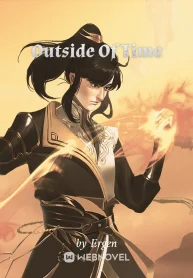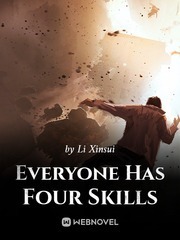The Ural Mountains belong to the central part of the Soviet Union. It stretches for more than 2,000 kilometers from the Baydalac Bay of the Kara Sea in the Arctic Ocean in the north to the Kazakh steppe zone in the south, between the Eastern European Plain and the Siberian Plain.
The mountain is generally not high, with an average elevation of 500 meters to 1,200 meters; the Renmin Peak at 1894 meters in the subpolar region is the highest peak in the Urals.
This is the dividing line between Asia and Europe. For the Soviets, it has always attached great importance to European industrial construction. In the past, the Ural Mountains were simply places of exile.
However, the Ural Mountains are a treasure house of Soviet minerals. Its eastern **** contains minerals such as magnets, copper, aluminum, platinum, and asbestos; its western **** contains potash, oil and natural gas.
There are also a large number of forestry resources. There are large broad-leaved forests and coniferous forests on the west slope, and linden, oak, maple, birch and other tree species grow in the forest; the east **** is mostly larch, but broad-leaved forests are rare. .
Such mineral resources are very important to the Soviets. Along the mountains of the Ural Mountains, there are some cities, such as Sverdlovsk, Chelyabinsk, Perm, Ufa, and Ize. Vsk, Olimpurg, Nizhny Tagil, Magnitogorsk and Kurgan.
And now, the industries in these cities have developed tremendously, because almost all the industries in the western part of the Soviet Union have moved over.
Yekaterinburg is an important machinery production base, Chelyabinsk is a well-known tank and automobile base and steelmaking base, as well as the most important railway hubs, Magnitogorsk, Nizhny Tagil, Sverd Dlovsk and Ufa are part of the Ural Steelmaking Industrial Zone and are large-scale steelmaking, ironmaking, coal coking, coal mining and iron ore industrial bases.
Nizhny Tagil, Factory 183.
The Soviet Union also often named factories with numbers. In later generations, it was more often named after their place, Ural Mountain Locomotive Factory.
This was originally the I.V. Stalin Ural Railway Vehicle Manufacturing Plant. Later, as the situation in Ukraine deteriorated, the Kharkov Steam Locomotive Plant was relocated as a whole, and they synthesized the latest and larger Ural Mountain Locomotive Plant.
Now, the locomotive factory is producing T-34 tanks day and night. Although this tank does not have much technical advantage in front of the Germans, its simple design and large output meet the needs of the Soviets.
Conquer opponents with huge numbers!
There is a shortage of oil now, but the Soviets are also trying their best to increase oil production. The bombed Second Baku is also resuming oil production. These have nothing to do with them.
They only need to produce good tanks.
At the critical moment of survival of the Soviets, the workers in the tank factory in Nizhny Tagil also broke out with great enthusiasm for production. With only a few loaves of bread a day, they are still producing day and night. The current monthly output, It has reached an astonishing 700!
This can be compared with Germany. Although Germany has integrated European industry and Krupp is responsible for overall distribution, the monthly output of Germany's most important tiger tank does not exceed 400, which is already the total output of all factories.
And a tank factory in Nizhny Tagil can produce 700 tanks in one month!
At this time, in the open space outside the factory, a large number of tanks were already parked. These newly built tanks were all waiting for rail transportation.
In order to transport iron ore from the Ural Mountains, the Germans also built a railway. Now, this railway has played a role and can make their transportation more convenient.
Even so, because various places need transportation, they have to wait for material dispatch.
At the same time, next to the tank factory, there is a corresponding tank design bureau, code-named KB-520.
This design bureau has a long history. They are the design team that once led by Koshkin and developed the famous T-34 tank.
It's a pity that Koshkin died young, which was embarrassing. After that, the design bureau was led by Koshkin's close friend, Alexander A-Molozov.
In a period like this, they are quite nervous. Although there is an industrial foundation here, they are still facing a mess.
There is a shortage of rubber, steel, and electrical equipment. Almost all the necessary materials are lacking.
In this case, the design bureau must improve the production of tanks and try its best to save every ton of rubber, steel, armored steel, wires and all precious production materials.
Therefore, almost all parts of the prototype T-34 tank have been modified to adapt to this difficult environment in wartime. For example, cast iron parts replaced copper parts, and welding replaced rivets. The production process is greatly simplified, the production speed is accelerated, and the cost is reduced. This has made a great contribution to the mass production of T-34 tanks in wartime conditions.
As for the poor quality of the product? Of course, he doesn't need to worry about it. Anyway, the tank will live on the battlefield for less than ten hours on average, as long as it can be driven up.
Compared with Germany's excellence, the tank turret has leather interiors to keep soldiers from kowtow. Soviet tanks are the difference between Rolls-Royce and Sanma.
However, Morozov knew that just producing these T-34s for pure consumption is far from enough.
"Now we are short of everything. It is good to be able to complete the production tasks set by the superiors. We simply do not have the ability to improve tanks." In the simple meeting room, Molotov's assistant, NA-Kucher Company Ke said.
It is simply a new round of disputes. Such disputes have started almost since the production here.
Molotov wants to improve T-34.
"We can see ~www.novelhall.com~The current T-34 is purely a role that consumes German shells. We can't even destroy the German Tiger from behind. In this case, we still lag behind in production. The T-34 is actually a crime. We must improve and can’t wait.” Molotov emphasized again.
Not to mention that because of the departed Koshkin, I can't bear to watch the end of the T-34 today. It is just to cherish the lives of frontline fighters and to improve the existing tanks.
"How to change?" asked another assistant, A-V-Kolesnikov.
He was keenly aware that Molotov's words had changed. A few days ago, he had been calling for the development of a new tank, but today, it has suddenly become an improvement to the existing tank. Maybe it is even less difficult?
"Our firepower is seriously inadequate. We must improve the tank gun. We choose from the existing artillery. The 85mm anti-aircraft gun is the most suitable for improvement. At the same time, we will expand our bottom seat and increase the turret space, and change it to three people. Turret," Molotov said.
(It is also said that the 85mm gun is a cannon origin?)







